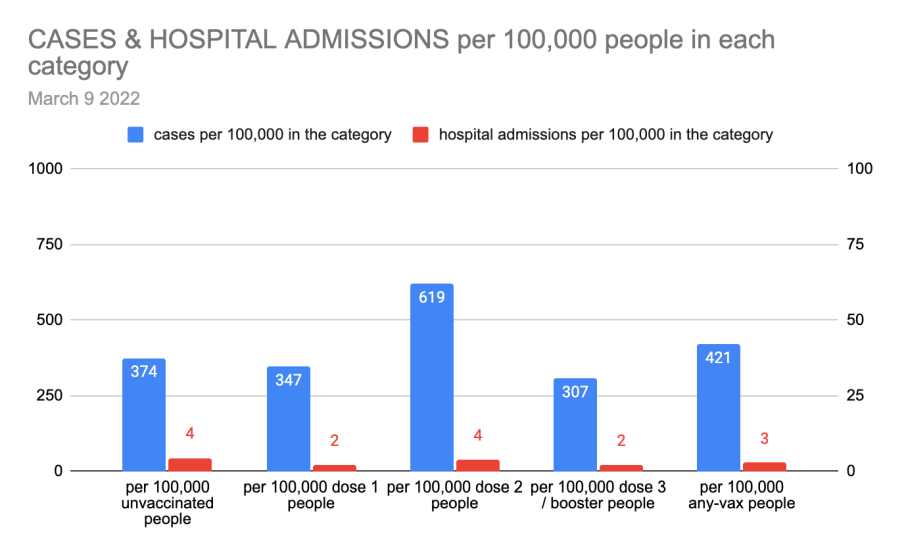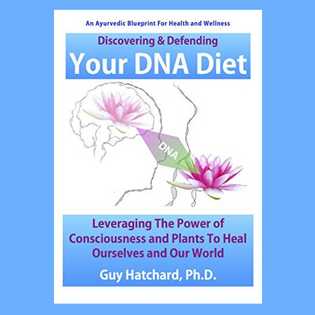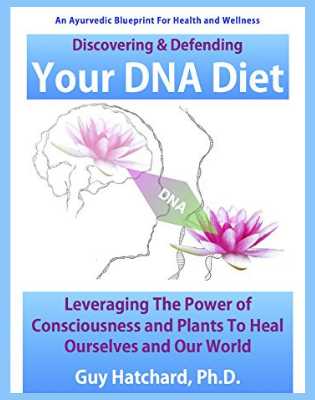Many people have been asking me about numerous recent articles in mainstream media reporting high risks for unvaccinated people and enhanced protection for the boosted.
Accurate statistical analysis takes time to compile, fortunately I have been helped by people working hard behind the scenes.
According to an assessment of Ministry of Health data from 9th March 2022, unvaccinated individuals are 200% more likely to be hospitalised than the boosted. At first this sounds impressive.
Epidemiologist Dr. Michael Baker thinks so. He says (11th March, 2022) that, without vaccination, New Zealand would have much higher hospitalisations and deaths:
“It would be much higher if it wasn’t for that. It would be not manageable, absolutely unmanageable if it weren’t for vaccination.”
It is actually a relief to see that Michael Baker is referring to Ministry of Health data. A few days earlier, modeler Dr. Shaun Hendy’s team, at government funded Te Punaha Matatini, sought to frighten the whole population, just as they did when they famously predicted 80,000 New Zealand covid deaths.
They suggest that the unvaccinated are 1200% more likely to be hospitalised than people with two mRNA doses and 2700% more likely to go to hospital with Omicron than the boosted (Stuff, 17th February, 2022).
The scientific flaws in their argument are so large and obvious, it was certainly irresponsible of Stuff to report this. The critical components of successful modelling are accurate assumptions and real world data comparisons.
Neither were satisfied in this case. Te Punaha Matatini’s predictions are completely contradicted by the data referred to by Michael Baker.
There are also flaws in the arguments presented by Michael Baker et al., although they are not so immediately obvious. Baker reports relative risks, without commenting on absolute risks.
This is a statistical sleight of hand used to make a risk factor appear more significant than it actually is. You see it all the time in news stories about food: “Why eating just one sausage a day raises your cancer risk by 20 per cent”
Twenty percent is the relative risk, and it sounds scarily high. The reported finding actually translates to an absolute risk increase from 6 people in 10,000 up to 7 people in 10,000.
You might drop your sausage for 20%, but if you knew the increased absolute risk was only 1 part in 10,000, you might be tempted to hang on to it, and even add a slice of bacon.
What is the Absolute Risk Difference for Covid-Associated Hospitalisation?
The graph below (data from Ministry of Health – spreadsheet here) shows that there are 4 hospitalisations per 100,000 unvaccinated people, compared to 2 per 100,000 boosted people, and 3 for any vaccination on March 9th 2022.

There were 21,038 cases announced on the 9th of March. Dr Nick Wilson believes that the true numbers of covid infection are currently (as of 9th March, 2022) four to five times higher than the reported numbers.
Using the conservative end of Dr Nick Wilson’s prediction: 4 x 21,038 = 84,152 cases. This equates to 2% of the total population of 5,084,000 being infected.
So when 2% of the population is infected the percentage of covid positive people in hospital in each group will be:
- 0.004% of unvaccinated people
- 0.002% of boosted people
- 0.003% of any-vaccination people
This means there is an absolute risk difference for hospitalisation between the unvaccinated and the boosted of 0.002%. This means the apparent increased risk of hospitalisation for the unvaccinated compared to vaccinated is somewhere between 1 and 2 per 100,000 people.
A very small increased risk. But is even this very small elevated risk a reliable figure? No it is not.
There is a great deal of volatility in hospitalisation data. The absolute numbers of hospitalisations are so small that the differences between vaccinated and unvaccinated outcomes are within the margin of error (you will be familiar with this concept from the margin of error always quoted along with political polls).
A great deal also depends on the definitions of vaccinated and unvaccinated and the ways they are counted which the Ministry of Health have not disclosed. There is no data on who was in hospital with Covid and who because of Covid.
For example, are pregnant women in hospital to give birth who test positive for Omicron counted as Covid hospitalisations?
The Cost of Covid
The cost of New Zealand Covid policy currently amounts to more than $64 billion over two years ($13,000 for every man, woman, and child—all borrowed money which will have to be repaid by us all going forward).
The adverse social, and mental costs of Covid are incalculable. The damage to small businesses and the economy cannot at this stage be reversed. We face years of rebuilding in many cases from scratch.
The loss of employment among the unvaccinated who are largely people used to managing their own health with a lower cost to the state. The devastating social divisions, even among families, based on misleading government advertising about Covid-19 effectiveness and safety.
The high incidence of adverse health effects following Covid-19 vaccination, which according to Medsafe is running at 30x traditional vaccines.
We also have to realise that the effectiveness of the booster wanes rapidly, whereas natural immunity acquired after infection lasts longer.
In the UK, official UKHSA and Scotland Health figures record that the boosted are now more likely than the unvaccinated to be hospitalised with Omicron. Bearing in mind that many (most? we don’t know) of the Covid hospitalisations will be with Covid, not because of Covid, we need to ask ourselves:
Was a 0.002% Absolute Risk Reduction Worth It?
No other conditions such as cancer or heart disease benefit from government funding to the extent that Covid has. Cancer kills 9,000 New Zealanders a year, 200 times the rate of Covid deaths.
Even a small portion of the $64 billion Covid-19 government fund would have updated and transformed our health service and paid for modern preventive initiatives, providing world standard healthcare for the whole population well into the 21st century.
Guy Hatchard PhD was a senior manager at Genetic ID a global food safety testing and certification company (now known as FoodChain ID)






